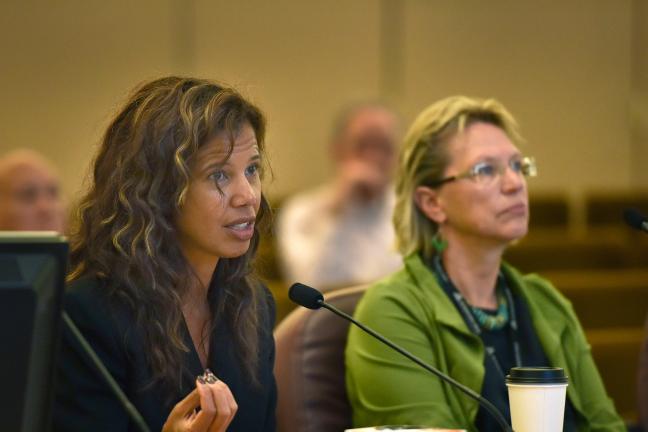A new Multnomah County Health Department report says legal marijuana raises health concerns around use by middle and high school students, pregnant and breastfeeding moms, motor vehicle drivers and inexperienced users.
The 10-page
In Oregon in 2014, voters approved Measure 91 allowing adults over 21 to possess small amounts of marijuana. Beginning in January 2016, the Oregon Liquor Control Commission will begin accepting business applications and later in 2016, retail sales are expected to begin.
Strong evidence of harm in some areas:
The Health Department team examined reams of research on marijuana to provide the Board of County Commissioners and other policy makers with “unbiased’’ information, Dr. Paul Lewis told the Board at a briefing on the document Tuesday.
The picture is hazy, he said, because much of the research occurred when marijuana was almost exclusively smoked (edibles were much rarer) and when concentrations of THC were much lower. And many reached conclusions that landed on one side.
“Almost everything that we find written is either by the drug control side, or the advocacy side that think it's like a vitamin and everyone should take it everyday,’’ Lewis said. “So we’re stuck with a lot of noise.’’
Nonetheless, he said, Health Department analysts identified valuable clues in that noise as to what might cause concern with increased use. Evidence is strong that use can cause:
- Short term anxiety. Lewis said this has been recorded in emergency rooms where people were observed feeling very anxious and having panic attacks either after using much stronger-than-expected marijuana or through ingestion when the effect doesn't stop as quickly as with smoked forms.
- Impairment. “Really, there is no question that reaction time, reflexes, memory and attention decrease objectively when people use marijuana,’’ Lewis said.
- Dependence. From surveys about 10 percent of regular users meet criteria for dependence and 1 in six regular users are trying to quit. “Dependence does develop,’’ Lewis said. “We don't think it’s as severe as alcohol or tobacco, but clearly there is a dependence with regular risk and it appears higher in people who started as youth.”
- Driving under the influence. “We enough experience to stay fairly confidently that, the risk of getting in an accident is twice as high if you recently smoked marijuana. Like alcohol, there is a short term impairment in these skills you need to drive a vehicle.’’
- Accidental poisoning from edibles. “As a pediatrician, we have great concern about brightly colored tasty objects that have an active drug in them,’’ Lewis said. Colorado has seen an increase in pediatric visits to the emergency room for accidental ingestion.
Dr Lewis said as more research is being collected, the precautionary principle should be applied to those areas where impact could be lifelong effects including, during pregnancy and breastfeeding and youth access.
Use among teens and young people already high
Marijuana is illegal for anyone under 21. Yet surveys before legalization show that almost 10 percent of eighth graders and 20 percent of 11th graders in Multnomah County used in the previous month. That percentage rises to 32 percent by age 18.
“There is definitely an issue around youth access to marijuana today,’’ said Tricia Tillman, public health director, “ And with all the marketing around legalization of recreational marijuana, that concern continues to grow.’’
“This is a new frontier in public health,’’ she said, but we can draw on our experience with tobacco control work and alcohol policy.
For example, we know from a large body of research, that when alcohol retail outlets are highly concentrated in communities, that is associated with increased alcohol misuse, unintentional injuries and crime. And, she said, we know from decades of experience in tobacco control how difficult it is to go backwards and undo damage from lax and nonexistent policies.
Tillman said Multnomah County’s direct authority over marijuana is very limited. However, the Health department is working with cities in the county on time, place and manner regulations of that discourage youth use, promote healthy neighborhoods and reduce crime.
The department will also keep an eye on unintended consequences that can affect community health. Among them: the potential for police profiling around the legal age for tobacco use -- 18-- and the legal age for marijuana -- 21 -- and how similar the use of those products may appear. Other potential areas of concern are the impact on federally funded housing and how rules against use may be applied and enforced. Finally, whether legalization may lead to any differential discipline in the schools.
The department will also be continuing to assess changes in emergency room admissions, calls to the poison control center and in the results of surveys given to new mothers.
Chair Deborah Kafoury said that as a parent, she was greatly concerned about the rapidly changing landscape, especially for kids and families.
“It seemed like when people voted for it, it was to decouple from the criminalization of marijuana and not necessary making it much more available and attractive to youth in our community.’’

